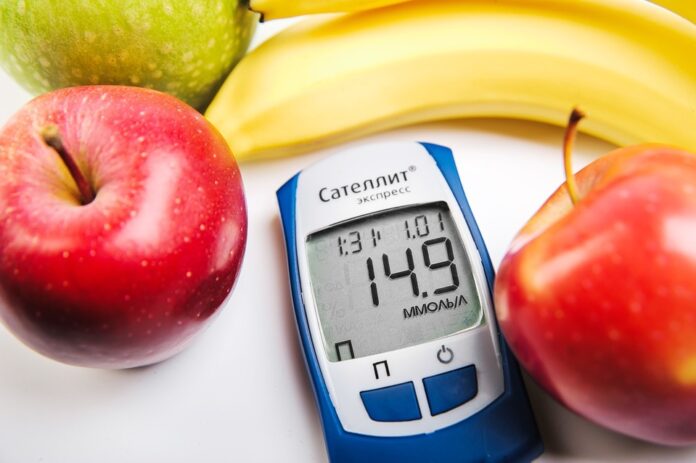The foods people are recommended below have a low Glycemic Index (GI) and are high in fiber, which helps to control blood glucose level. Including them in your diet is key to controlling diabetes naturally, and if you are not diabetic patient, they help prevent you from developing it.
-
Rye
Bread is usually a ‘forbidden’ food for diabetics because it is rich in simple carbohydrates that immediately raise blood sugar. But nevertheless. Rye, spelled and 100% whole wheat bread has a Glycemic Index below 55, which gradually releases blood glucose and does not cause sudden spikes.
-
Sweet Potatoes
Potatoes have a high glycemic index, so they raise blood sugar quickly, but sweet potatoes have low blood sugar and are equally nutritious. In addition, sweet potato meat contains even more fiber than the skin, so it is especially convenient if you suffer from diabetes.
-
Apple
With the exception of pineapple and melon, most fruits have a low glycemic index, especially apple and cranberries. This is due to its high water and fiber content that compensates for its natural sugar (fructose). Keep in mind that, as fruits ripen, the Glycemic Index (GI) increases. Fruit juices also have a high GI because part of the fiber is removed. So, when you prepare them at home, at least do not strain them and the loss will be less.
-
Oats
Oatmeal has a double advantage. It has a GI below 55 and contains a type of fiber (Beta-Glucans), which helps maintain glycemic control because it improves insulin sensitivity. The most recommended in case of diabetes is your fiber. Its flour is also healthy, although it should be consumed in small quantities because it is rich in carbohydrates (1 cup contains 28g of carbohydrates).
-
Nuts
Nuts are very rich in dietary fiber and their GI is reduced. They are also a source of phytochemicals such as flavonoids, minerals such as potassium and magnesium, and antioxidant vitamins that help improve insulin resistance. Ideally, nuts should be as little processed as possible. Those that carry flavorings or coatings have higher GI values.
-
Legumes
Chickpeas, lentils, beans or peas have reduced glycemic index and, above all, a lot of fiber. Several investigations have shown that the incorporation of legumes in the diet improves glycemic control and reduces the risk of coronary heart disease in people with type 2 diabetes. Ideally, take 3 servings a week.
-
Garlic
The medicinal virtues of garlic have been well known for centuries. But, in addition, it has been scientifically proven that it contains compounds that help improve insulin resistance. An investigation by the American Chemical Society has shown that its antioxidants protect the heart from diabetes-induced heart disease. You can take it raw, add it to salads or use it as a dressing to flavor your dishes.
-
Cod
Fish, like meat, does not contain carbohydrates, so its GI is 0. However, in a study conducted with Norwegian women for 5 years, it was observed that the consumption of cold-water fish, especially cod, helps to control and prevent diabetes, which is not the case with meat. Whenever possible, it is better to choose fish as a source of protein in the diet.
-
Yogurt
Taking a yogurt daily helps reduce the risk of type 2 diabetes. This was demonstrated in a large meta-analysis conducted in 2014, according to which yogurt is the only dairy that reduces the risk of this disorder. Of course, yogurt must be natural. Sweetened or flavored contain sugar and sweeteners that obviously should be avoided if you suffer from diabetes.

-
Avocado
Consuming 100 g of avocado (a quarter of a large piece) daily helps reduce cholesterol and glucose levels. The reason is that it contains 9 g of fiber per 100 g of food, which prevents blood glucose levels from rising rapidly. Good avocado fats also help improve cardiovascular health.
Do you know what the glycemic index is?
This term is used to measure how quickly the carbohydrates of food pass into the blood in the form of glucose after being digested. Logically, the faster this process is performed, the more sugar spikes are produced and the worse it is for your health. The glycemic index of a food can be low, medium or high and is measured with a numerical scale ranging from 0 to 110. The higher this value is, the more glycemia increases caused by eating them:
The GI is high if it is greater than 70.
The GI is average if the value is between 56 and 69.
The GI is low when it ranges from 0 to 55.
Remember that this term refers only to foods that contain carbohydrates.
Source: https://www.wfmj.com/story/41034013/10-best-foods-to-control-diabetics-naturally
Read More: Benefits of Orthotics














![Technical Aspects of 844 Area Code in 2024 [Detail Guide] 844 Area Code](https://articleify.com/wp-content/uploads/2024/01/844-Area-Code-150x150.jpg)














